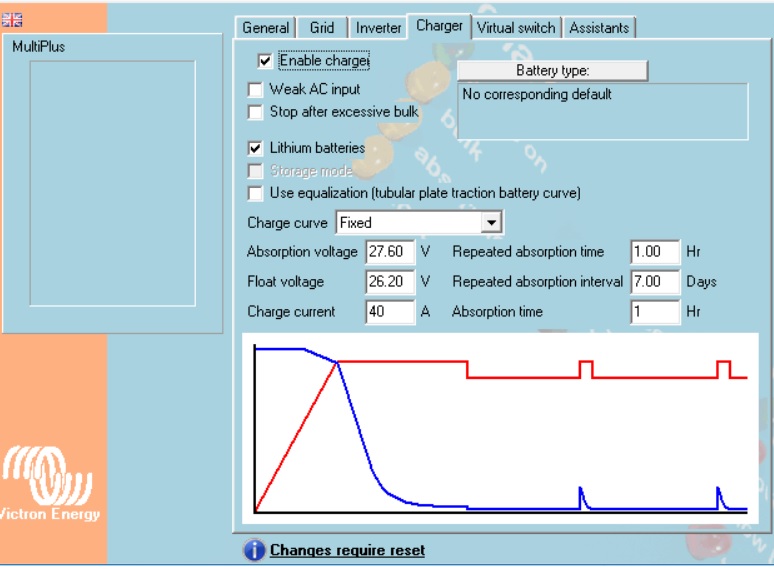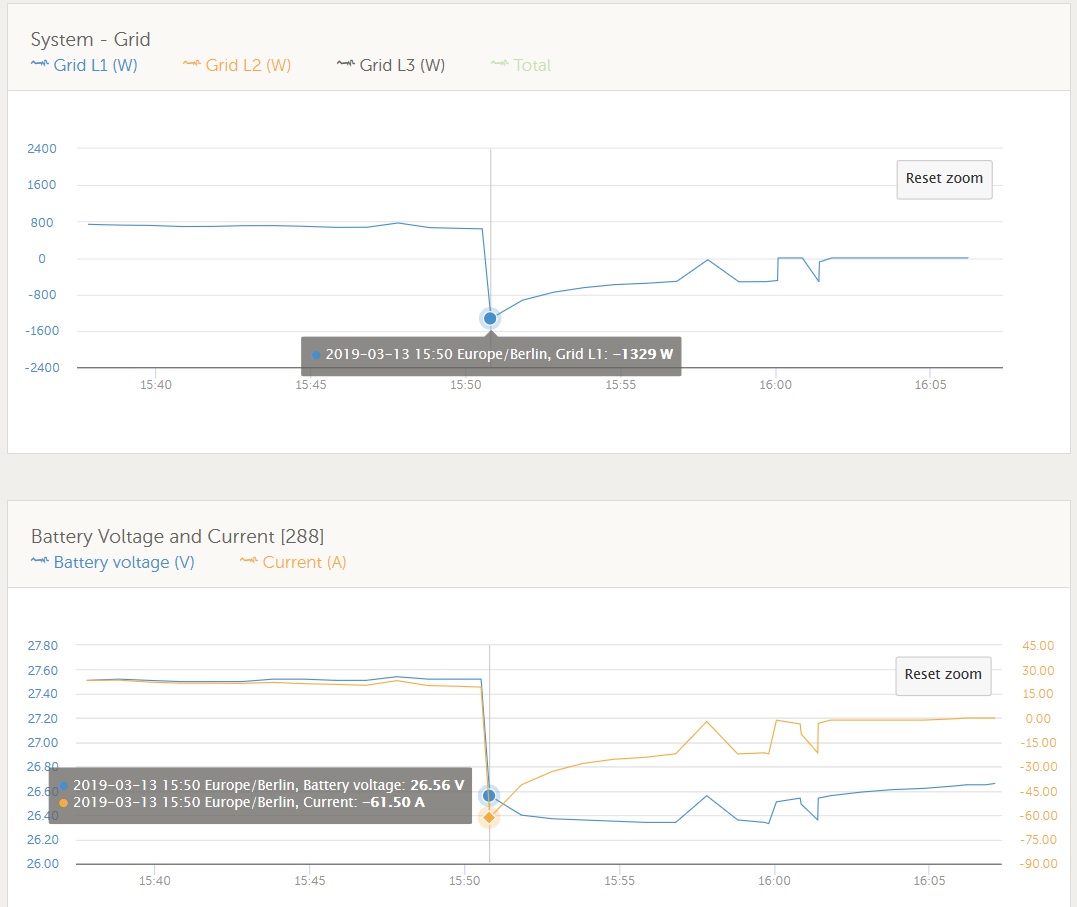When charging the battery to 100% with multiplus and mppt it finally reaches absorption point. After 1Hr of absorption it stops charging and starts to discharge the battery into the grid.
I tried different things to stop it from happening,
- update newest firware tot the multi,
- update mppt,
- even downgrade the venusOS to 2.22 instead of the 2.23 i was running.
- pull out the mppt cable(maybe it sends faulty values, but it wasnt)
- resetted all devices..
it keeps discharging battery to grid. I have no clue what to do next...for now i disconnect the mains to stop it. Anyone who has an idea?
thanks in advance, Tommas
Setup:
multiplus
mppt75/50
RaspberryPI with venus image (ESS-optimized w/ battery life, feed-in allowed, 35% min. SOC)
bmv700
LiFePo4 25.6V 7kWh battery with 2-wire BMS
in the multi charger tab set the next values: (27.60V / 8cell = 3,45V/cell)

the curve is a little strange because of disconnecting the mains to stop it.
